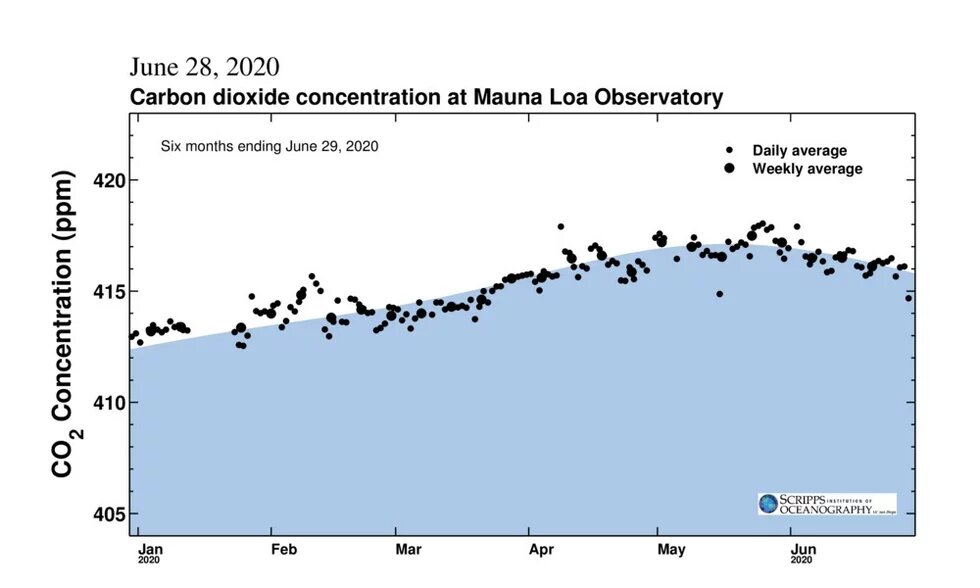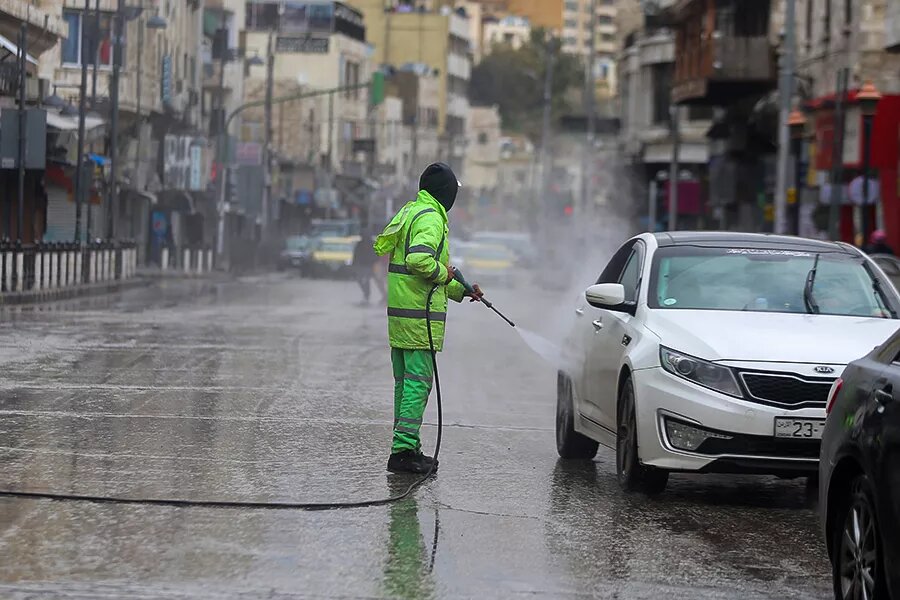

Some believe that the COVID-19 pandemic has reduced the greenhouse gases causing climate change. This belief is inaccurate, as the pandemic has only reduced the emission of these gases for a temporary period. However, a few months will not reverse what human activity has caused since the industrial revolution. We still have to work on finding sustainable solutions to combat climate change.
The media today is occupied with COVID-19 pandemic news. Sometimes we hear stories about herd immunity, at other times about a possible vaccine, the number of deaths and people infected and countries in distress. What is happening today is something we have not witnessed in the modern era and since over a century. But what about the climate change?! Globally, there are millions of deaths form air pollution resulting from the industries causing climate change, natural disasters, intense weather patterns, floods, hurricanes, droughts and other successive phenomena that humanity has not witnessed before. This is all happening because of our activities since the industrial revolution.
Recently, some news has been circulating about the “earth breathing again” and that climate change and the deterioration in the ozone have decreased. Air pollution has in fact decreased tremendously since the beginning of the pandemic, which is to be expected as vehicles stopped moving and factories including coal plants stopped working. The reduction in the levels of carbon monoxide and nitrogen dioxide, the two main gases causing air pollution, has had a positive impact on the environment and humans alike. In this regards, there have been studies correlating air pollution with COVID-19 mortality rates such as the one by Harvard University that associated long-term exposure to air pollution with an increase in the COVID-19 death rates[1]. However, the news circulating about the decrease in greenhouse gases or that climate change has been held back as a result of the pandemic is unfortunately inaccurate.
Greenhouse gases emission started from the beginning of the industrial revolution in the 1760s due to the burning of fossil fuels in various forms by industries. These human practices have increased the concentration of greenhouse gases in the atmosphere. While the lockdowns implemented by many countries have contributed to reducing these emissions for a few months, this reduction is in no way comparable to the amount of greenhouse gases in the atmosphere compiled over decades and will not reverse the ramifications of the industrial revolution.
Although some believe that reductions in greenhouse gas emissions due to the COVID-19 pandemic can already be detected, the data shown in the curve below by the Mauna Loa Observatory in Hawaii shows otherwise. It reveals that since the virus appeared greenhouse gases emission have continued to rise despite the lockdown procedures. So far, the concentration of these gases in the atmosphere exceeds 414.68 ppm, even though the upper safe concentration of carbon dioxide in the atmosphere is 350 ppm.[2]
[3] Keeling Curve 6 months record
Despite this, there are many lessons to be learnt from the COVID-19 pandemic in the efforts to combat climate change. I will address five of those lessons as follows:
- Everything is possible when there is political will: on an annual basis, the world holds several meetings on climate change, concluded with the annual Conference of the Parties[4] (COP) as part of the United Nations Framework Convention on Climate Change (UNFCCC). In this conference, countries discuss rules and responsibilities, and the fossil fuel lobby imposes its agenda on governments, the media as well as private and funded sectors. The latest COP held in in Madrid – Spain[5] in 2019 has ignored the voices of the most vulnerable countries and communities. This has weakened the Paris Agreement, the historical agreement in 2015 to limit the temperature increase to 1.5 ˚C since pre-industrial levels[6]. We have thus exhausted twenty-five years in meetings and parties’ conferences to agree on reducing emissions, whether by mitigation or adaptation. Twenty-five years of neglect and failure to take climate change seriously. This year’s conference which was supposed to take place in the United Kingdom was postponed due to the pandemic[7], and this is another delay in implementing the Paris Agreement and another excuse for countries to delay their action to halt climate change. In contrast, many countries have taken serious steps to confront the pandemic such as halting manufacturing, aviation and the production of fossil fuels. Even though such steps are temporary, the virus has revealed to us that everything is possible and that together we can achieve change. If there is a serious political will to implement the Paris Agreement, we need to keep 80% of fossil fuel in the ground[8].
- We can work remotely: in an unprecedented move, world leaders representing the Group of 20 (G20) met virtually this year[9]. So, do we really need to be constantly travelling to attend meetings? Do we even have to go to our offices every day? Learning from the COVID-19 pandemic experience, many companies such as “Twitter”[10] have decided to invest in flexible work arrangements including working remotely. Hence, it is important to acknowledge the positive impact of working remotely in reducing transportation and wasted time, increasing productivity and improving the health of employees. Today, a number of ideas on flexible work and working remotely have emerged out of the lockdowns imposed by governments. If implemented after life returns to normal, these ideas can improve work efficiency while simultaneously reducing the levels of greenhouse gas emissions. Furthermore, these experiences and ideas have redefined our relationship with our surrounding environment and reconnected us to it, something that was lost while working in concrete offices.
- Renewable energy is the future: although current fossil fuel prices have fallen, the oil market has proven to be unstable. Countries’ economies should not depend on such a fluctuating market especially during crises. Prices have fallen significantly and this gives us clear evidence that we should depend on sustainable and just energy that does not change according to different situations and that continues to be available.
- The media is an ally: the disasters caused by climate change and the burning of fossil fuels have cost the world billions and will cost even more. According to studies carried out by the World Health Organization (WHO), its most optimistic expectations indicate that human death toll will increase on an average of 250,000 annually during the next decade. Additionally, the impacts of climate change could place 100 million people in poverty by 2030.[11] These alarming numbers have not succeeded to force governments to deal with climate change in a serious manner. With the spread of COVID-19, solutions are now more possible. Were we waiting for such a catastrophe to urge us to act instead of acting to stop the fires in Australia or the hurricanes in the Philippines? The solutions to climate change do exist and the most important ones are reducing aviation and ship movement, focusing on local production, empowering local communities in order to have a strong local economy that is less dependent on imports, in addition to reducing consumption patterns. Now is the time to change the discourse on climate change to make it more assertive and clearer than before and we should intensify the media’s coverage on the topic. Climate change is happening and its repercussions are fatal. Specialists from all fields should cooperate with the media to make it a case that all nations talk about. The COVID-19 pandemic has proven that the media has a great influence on people and can bring their attention to important topics and issues.
- Together we can: the power of choice and the real action emanates from conscious groups and collectives that come together in solidarity and embrace humanitarian and social issues. In light of the pandemic, today we are witnessing strong and influential cohesion within the social fabric, great initiatives, support to communities and solidarity that we have not witnessed before. This stems from the fact that the pandemic is easy to feel and evaluate.
The current pandemic is caused by a virus, and its symptoms are clear. On the other hand, climate change has numerous causes and massive ramifications. If the pandemic persists, the most vulnerable communities will suffer the most considering its social and economic impacts. The same can be said for climate change and its repercussions.
What we need to do today is to see beyond the current situation and to think about sustainable solutions that respect and conserve biodiversity. Solutions that allow sustainable development while considering both humans and the environment. Approximately 75% of newly emerging infectious diseases originate from animals and result from various anthropogenic, genetic, ecologic, socioeconomic, and climatic factors.[12] Therefore, we have to pause and reevaluate our relationship with the environment and other beings in order to stop the emergence of new viruses and to live in harmony on the planet that we deplete on a daily basis.
[2] Keeling Curve
[3] Keeling Curve, 6 months record, https://scripps.ucsd.edu/programs/keelingcurve/wp-content/plugins/sio-bluemoon/graphs/mlo_six_months.png
[7] https://www.theguardian.com/environment/2020/apr/01/uk-likely-to-postpone-cop26-un-climate-talks-glasgow-coronavirus


